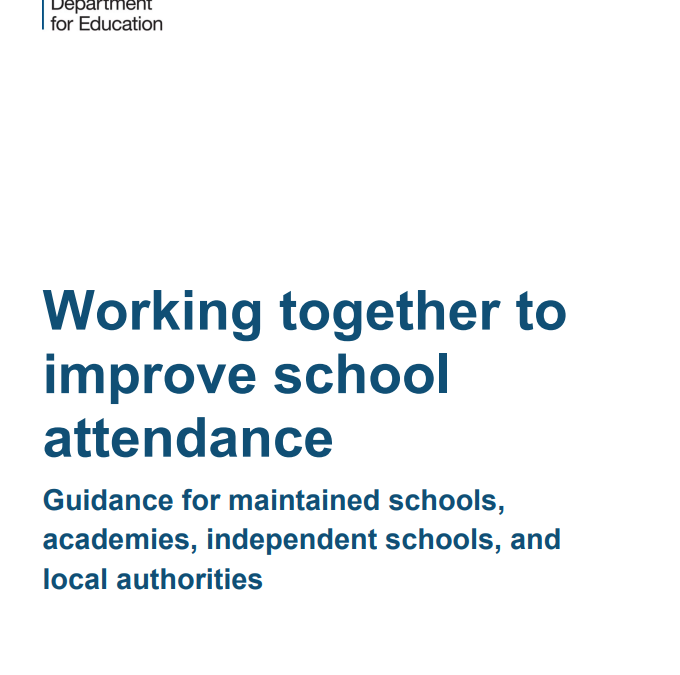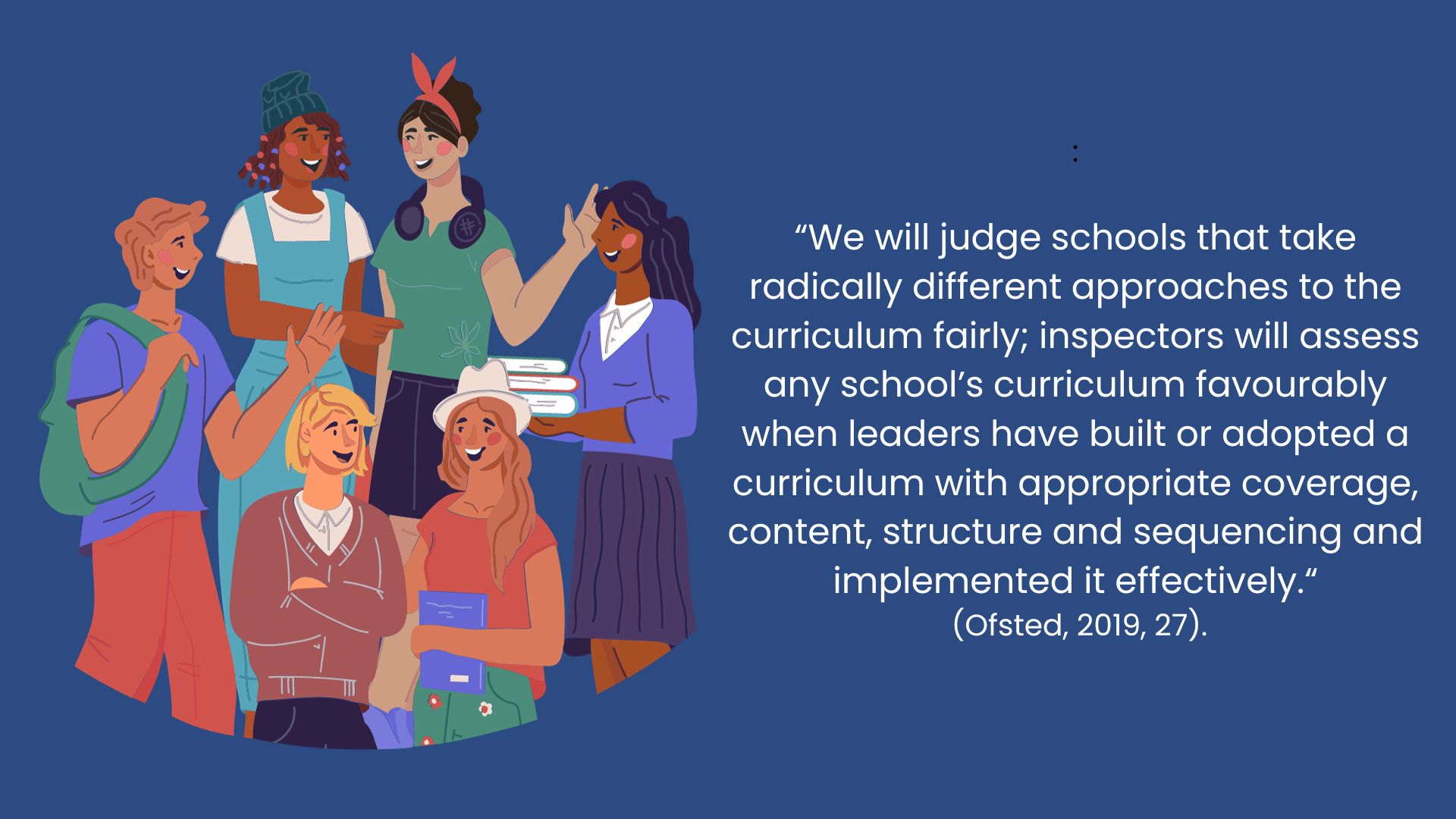Last week the Department for Education issued its guidance for education settings who must follow new rules on supporting, monitoring, and recording attendance as of this September. The guidance sets out how the Working Together to Improve School Attendance (May 2022) document will be implemented, once it becomes statutory for the 2024-2025 academic year.
There has already been significant public debate amongst education professionals on the headline issues. For example, the government’s decision to increase the penalties issued to families whose children fail to attend school, and that live attendance data be sent directly to the Department for Education as part of the new requirement to share daily school attendance data.
I have been thinking, since last week, about the impact of the new attendance guidance on the alternative provision settings I support from both a governance and EdTech perspective. AP across the UK is a mixture of maintained and non-maintained provision; it includes everything from independent special schools and medical provision, to pupil referral units and unregistered settings offering bespoke programmes. Many of the most vulnerable pupils are attending APs, and typically (though not always) have lower attendance than their mainstream counterparts. Students in AP have higher levels of SEND than in the wider school population, and are more at risk because of extended periods of time being temporarily or permanently excluded.
Supporting, monitoring and recording attendance is something APs are pretty good at; the best APs I have worked with find innovative ways of catching pupils doing things well, including attendance. Some have even found ways to capture this digitally. I am absolutely sure that the maintained part of the AP sector will rise to the challenges outlined in this series of DfE documents, despite the difficulties they will face.
However, my own concerns are for smaller, unregistered alternative provisions and independent special schools who support pupils with some of the lowest attendance in the country. These settings often provide highly specialised provision to children who have been excluded from multiple settings, or those at the more extreme end of the special educational needs spectrum. Will these settings be expected to implement the same guidance? If so, will they be ready to make a case for how and why their bespoke attendance systems work when they are often so different from the norm? What if you are an independent special school with minimal Local Authority support, or a new provision starting small? Getting the right information when you don’t operate within a well-established network of maintained provision can be daunting, so here are my thoughts on what the attendance guidance might mean for unregistered AP and independent special school settings….
Do the DfE guidance documents all apply to independent special schools?
Well, yes. Working Together to Improve School Attendance describes itself as applying to:
“All school and academy trust staff, headteachers, governors, academy trustees, and alternative provision providers.”
While the guidance doesn’t specifically mention independent special schools, taken in conjunction with other DfE statutory guidance (for example the Independent School Standards and KCSIE) there is a strong implication that this will form part of the inspection process for these settings going forward from September. The document repeatedly refers to “schools” and a good rule of thumb here is that independent special schools operate within the DfE guidance even if it is not specified whether “all schools” refers to the independent part of the sector. This would be a minimum expectation whether your provision is inspected by Ofsted or not.
Furthermore, the most recent document entitled Summary Table of Responsibilities for School Attendance (designed to compliment Working Together to Improve School Attendance) refers to itself as both “statutory” and “for maintained schools, academies, independent schools, and local authorities” so there is far more clarity in the more recent document in terms of its application to independent schools.
Similarly, the requirement that schools share their daily attendance data with the Department for Education (using the Wonde MIS integration tool) is also applied to “special schools (including non-maintained special schools)”. Independent schools of all kinds will be required to adhere to the two statutory documents, but on sharing daily attendance information it is only independent special schools that are expected to do this currently.
Do the DfE guidance documents all apply to unregistered APs?
The list of settings to which the May 2022 statutory guidance applies includes “alternative provision providers” without specifying whether this refers to both registered and unregistered settings. It is kept deliberately vague, I suspect, because the SEND and AP Improvement Plan sets out the government’s agenda to gradually increase regulation of the unregistered AP sector by the end of 2025. The wording here provides wiggle room for the future without making it clear that unregistered APs must comply in the short term.
Interestingly, the Feb 2024 document repeatedly refers to itself as being for “schools” but does not specify whether this includes AP of any kind. Many unregistered AP settings have relied upon delivering under 18 hours of education to avoid being classed as a “school” and thus subject to the constraints of Ofsted. Given the increased concerns by central government over the suitability of alternative provision settings not registered with Ofsted, the omission of AP from the category of “schools” is probably not to be relied upon as a reason not to work to the same guidance as maintained APs. The reference to “schools” almost certainly implies the inclusion of all maintained settings. It is also likely that the definition of what constitutes a “school” could be stretched to include unregistered settings in future.
The requirement to share daily attendance data does include “non-maintained special schools” and “alternative provision” which is, again, not further defined. There is no specific reference to unregistered AP but the reference to “non-maintained special schools” suggests that non-maintained APs could arguably be included. By the letter of the guidance, unregistered settings probably cannot be compelled to share data currently, but it is worth thinking about whether this is best practice and whether abstaining sends the best message to your stakeholders.
The daily sharing of attendance information with the DfE is described as “voluntary”, but is it?
Despite the fact that the most recent guidance describes daily attendance data sharing as
“voluntary” it is hard to accept that there will not be an expectation that schools ensure this happens. For the majority of the school settings listed (90%, according to the guidance) this will just be a case of syncing their school MIS with the government’s free to access Wonde dashboard so there aren’t going to be many excuses not to do this even if it is supposedly “voluntary”.
For unregistered settings this is far more complex. Technically, the sharing of data is “voluntary” and unregistered AP is not specified. However, there will likely be a strong expectation that unregistered AP, as far as possible, falls in line with what other settings are doing because local and central government will want full visibility. Unregistered APs will need to consider the message it sends to Local Authority commissioning teams and other stakeholders if they do not make efforts to send attendance data. They will need to keep in mind that the need for LAs to work in more joined up ways with alternative provisions has already been mandated as part of the DfE’s recent Thematic Review of Alternative Provision in Local Areas.
What are the barriers to APs & independent special schools complying with guidance?
If specialised settings are to comply with the May 2022 and Feb 2024 guidance on attendance, there will need to be significant work to review their existing policies and processes. Many specialist settings will have already thought very carefully about how they manage attendance, especially given lower attendance rates can be the norm for pupils who face barriers to full inclusion. Two key requirements stand out and are summarised here:
- Where the policy/process has been adapted to meet the needs of the pupils in their care, APs must be able to explain precisely why this is appropriate.
- Where a pupil’s attendance is poor there must be clear plans for how it will be improved and significant evidence of all that is being done to support them on an ongoing basis.
For specialist settings who often work with pupils with the most complex needs, there will be numerous reasons why attendance may be poor and these will be hard for staff to directly impact or mitigate. For example, the bar for attendance in schools may feel unrealistically high for unregistered APs and SEMH provisions, who will prioritise working slowly to build relationships with pupils and won’t be able to show results in the short to medium term.
Settings will have to put work into reviewing policies to see where potential conflicts with DfE guidance may occur and may need specialised help to navigate the process. I think this is do-able, even for the most highly specialised provisions, but it will take some strategic thinking and may incur costs where consultancy is needed to support the process. Getting ahead of this will be key as the attendance guidance becomes statutory as of September 2024 and at any point could be imposed on unregistered settings as well as independent special schools.
What are the technical barriers for unregistered APs and Independent Special Schools?
There will be some serious technical barriers faced by some small specialist provisions. Most obviously, the requirement to send daily attendance data relies on a setting having its own MIS that will integrate with Wonde. The majority of smaller independent schools and unregistered alternative provisions won’t be using a standard MIS due to cost and/or suitability for their setting. Many operate using spreadsheets, have bespoke software, or rely on a combination of apps to manage attendance, behaviour and safeguarding. Settings may come under pressure from Local Authority partners to provide this information to help them meet their own statutory reporting requirements.
Additionally, there are a great number of references, in Working Together to Improve School Attendance, to the importance of data in decision making and policies/processes. For example, schools must:
- Monitor and analyse weekly attendance patterns and trends and deliver intervention and support in a targeted way to pupils and families. This should go beyond headline attendance percentages and should look at individual pupils, cohorts and groups.
- Use this analysis to provide regular attendance reports to class teachers or tutors to facilitate discussions with pupils and to leaders.
- Conduct thorough analysis of half-termly, termly, and full year data to identify patterns and trends. This should include analysis of pupils and cohorts and identifying patterns in uses of certain codes, days of poor attendance and where appropriate, subjects which have low lesson attendance.
- Benchmark their attendance data (at whole school, year group and cohort level) against local, regional, and national levels to identify areas of focus for improvement.
- Monitor in the data the impact of school wide attendance efforts, including any specific strategies implemented. The findings should then be used to evaluate approaches or inform future strategies.
Specialist settings can often struggle to pull together this information, partly as they work 1:1 or in small groups with provision tailored to individual pupils, making it hard to make meaningful comparisons between students. They also work in ways which make a comparison to national benchmarks almost impossible. Access to systems that record the very specific types of progress made in specialist settings can be tricky, since there are few systems on the market that cater specifically for them; those that do can be expensive or not as flexible as required.
Finally…
Overall, it’s a mixed bag of news from last week.
My instinct is to recommend that unregistered APs and independent special schools begin the process as soon as possible by reviewing the documentation and asking for help if required. Where possible, all settings (maintained or not) should aim to implement the requirements set out in the two statutory documents as soon as possible. They should also contact their software supplier to discuss how data uploads to the DfE could be managed if they don’t have an MIS as this could well become a standard requirement either from central government or local authority partners.









